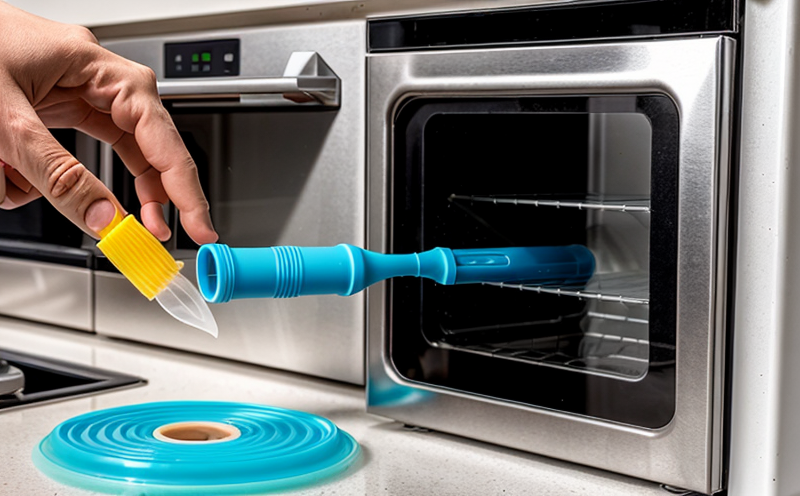ASTM D5511 Anaerobic Biodegradation Testing of Household Plastics
The demand for sustainable and eco-friendly products has grown exponentially in recent years, particularly within the household plastics sector. This trend is driven by consumer awareness about environmental impact and regulatory pressures to reduce waste. ASTM D5511 establishes a standardized test procedure for evaluating the anaerobic biodegradability of plastic materials under controlled laboratory conditions.
ASTM D5511 testing is crucial for manufacturers, researchers, and quality assurance teams in the household plastics sector who aim to demonstrate their products' environmental responsibility. The test provides critical insights into how a plastic material decomposes in an anaerobic environment, which is similar to conditions found in landfills or other waste management facilities.
Understanding the biodegradability of materials is essential for several reasons:
- To comply with environmental regulations and standards that mandate certain levels of biodegradation for plastics entering specific markets.
- To enhance product reputation by showcasing a commitment to sustainability.
- To ensure compliance with customer requirements or contractual agreements specifying biodegradable properties.
The test is particularly relevant for household products, such as food packaging, toys, and appliances. For instance, a food container that passes ASTM D5511 testing demonstrates its ability to break down in an anaerobic environment without contributing harmful byproducts or long-term pollutants.
ASTM D5511 specifies the use of a closed bottle system where test specimens are incubated in the absence of oxygen. The biodegradation process is monitored over time, with periodic measurements of weight loss and substrate consumption. This method ensures consistent and reproducible results across different laboratories.
| Key Parameters | Description |
|---|---|
| Test Specimen | A representative sample of the plastic material, typically cut into small pieces. |
| Bottle System | A sealed bottle containing test specimens and a defined amount of inoculum. |
| Incubation Period | The duration for which the specimens are incubated, typically 90 days or more. |
| Weighing and Analysis | Periodic weighing to assess weight loss due to biodegradation. |
The test results are reported as the percentage of weight loss or substrate consumption, providing a quantifiable measure of biodegradability. Compliance with ASTM D5511 ensures that products meet stringent environmental standards and can be marketed as eco-friendly.
Why It Matters
The significance of ASTM D5511 testing extends beyond compliance to broader industry goals. In the household plastics sector, the test helps manufacturers differentiate their products in a competitive market. By demonstrating biodegradability, companies can appeal to environmentally conscious consumers and meet regulatory requirements.
For R&D teams, ASTM D5511 offers valuable insights into material performance under specific conditions, guiding formulation adjustments or component replacements. Compliance officers rely on these tests to ensure that new products align with environmental standards and avoid potential legal issues.
The test also supports procurement strategies by providing data that can influence sourcing decisions. Companies can prioritize suppliers who offer sustainable materials, thereby reducing their environmental footprint.
Scope and Methodology
The ASTM D5511 standard outlines a rigorous protocol for evaluating the anaerobic biodegradability of plastic materials. The key steps include preparation of the test specimens, inoculation with specific microorganisms, incubation in closed bottles under controlled conditions, and regular monitoring.
| Step | Description |
|---|---|
| 1. Preparation of Test Specimens | Cut the plastic sample into small, uniform pieces to ensure consistent exposure. |
| 2. Inoculation | Add a defined inoculum of microorganisms known for anaerobic degradation processes. |
| 3. Incubation | Seal the bottle containing specimens and incubate in an anaerobic environment at 37°C. |
| 4. Monitoring | Weigh the specimens periodically to monitor weight loss due to biodegradation. |
The test concludes after a specified period, typically 90 days or more, depending on the plastic's expected degradation rate. The results are then analyzed for compliance with the standard.
Competitive Advantage and Market Impact
- Innovation in Sustainability: Demonstrating compliance with ASTM D5511 positions a company as an industry leader in sustainability, attracting environmentally conscious consumers.
- Regulatory Compliance: Ensures that products meet environmental regulations and standards, avoiding potential legal issues.
- Supply Chain Transparency: Provides data for procurement teams to make informed decisions about sustainable sourcing.
- Product Differentiation: A unique selling point in a competitive market, enhancing brand reputation.





